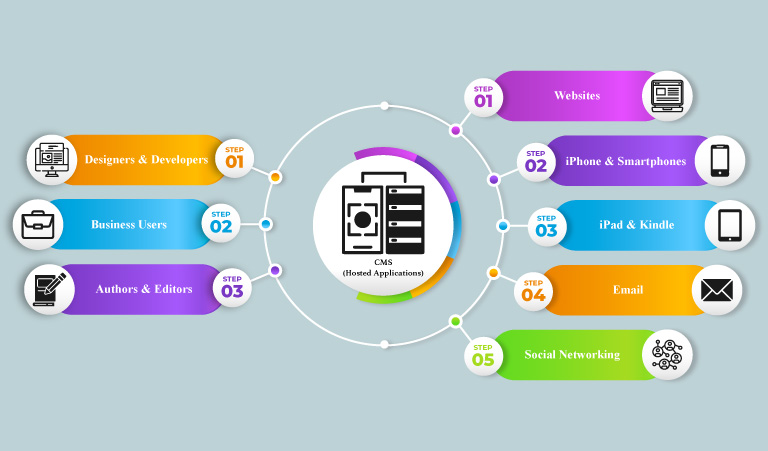If you are the one who owns the website, you probably fall into one of two categories, either your site is static, or it is dynamic. But first, let's understand what these terms mean. Those sites that need standard web programming techniques to update their pages are static sites, and those that have a content management system (CMS), which can update pages without any hardcode techniques, are dynamic.
The benefits of investing in a CMS extend far beyond saving time and money. Investing in an online presence can be one of the most lucrative decisions you'll ever make for your business. That’s the reason today most of the well-known brands use CMS for their businesses. However, you might want to know what CMS exactly means and what it does before investing in any CMS.
What does CMS exactly mean?
By definition, a content management system (aka CMS) is a software application or an integrated set of tools that enables users to Edit, Manage and Publish digital content on the website without having to know HTML, CSS, or any code from scratch. Enterprise content management (ECM) and web content management (WCM) are two basic and common uses for CMSes. The report also noted that global sales of web content management tools (WEC) totaled $4.9 billion in 2017 and are expected to reach $14.2 billion by 2024. A CMS, ECM, and WCMS are the three methods of managing content, however, each has its own advantages.
In order to understand their differences, we must first understand what are the main components of CMS and how it works:
The two main components of CMS are:
- Content Management Application (CMA) - Users can modify and delete content from a website using the CMA which is a Graphical User Interface, irrespective of their HTML skills.
- Content Delivery Application (CDA) - After content has been created in the CMA, the CDA component provides the back-end services that allow it to be managed and delivered.
Now that we have understood its functioning, let's jump into the difference between CMS, ECM, and WCM.
CMS is a forerunner to the Enterprise Content Management System (ECM). It is a web application that enables users to create, manage, and store digital content. CMS solutions are most effective for structured data like documents and database records.
An Enterprise Content Management (ECM) software combines strategies, tools, and security to manage content securely. It however deals with both structured and unstructured content. ECMs and WCMs are quite similar, the only difference is that WCMs manage web content. Product pages of an eCommerce site are the best examples we have for WCMs. For personal and enterprise use, there are many open-source and subscription-based CMS options. A few of the more popular providers are Joomla, WordPress, Magento, Wix, etc. For your reference and better understanding check out the list of CMS. Apart from this, it also contains a document creation tool that allows for collaborative writing. To understand the difference precisely let’s see their key components in detail:
| Key Components of Enterprise Content Management (ECM) | Key Components of Web Content Management (WCM) |
| Organizes unstructured data | Manages a variety of content types |
| Hierarchical folders are used to store digital files | Delivers content for customer engagement |
| Apps deliver content | Oriented toward the external world |
| Produce quality content | Provide multiple options for delivering content |
| Content categorization and workflow capabilities are included |
- Search and retrieval functionality allows data indexed for easy access. Users can search by keywords, publication dates, or authors.
- It supports revisions so content can be updated and edited after publication. It records any individual changes made to files.
- The format management process can be used to create HTML or PDF files from scanned paper documents or legacy electronic documents.
- Published works and templates that have been approved by organizations can be accessed by users to make changes.
- URLs optimized for search engines
- A discussion board and an integrated help
- Built-in file management
- Multilingual admin panel
- Access controls that are based on groups
- Templates that can be customized to meet your needs
- Features with audit log integration
- Wizard-based installation and versioning
- Little server resources needed
Selecting the right CMS for your website:
CMS administrators should be aware of how many users will utilize the system, depending on the geographical spread of the organization. Additionally, the CMS should be multilingual and the admin must know how many support personnel it takes to run the system. Also, the controlling power that both administrators and end-users have should be considered. A company's range of digital data forms is also to be taken into account, along with a wide variety of indexable digital content.









Sheetal
What are some factors an organization should consider when evaluating the geographical spread for CMS usage?